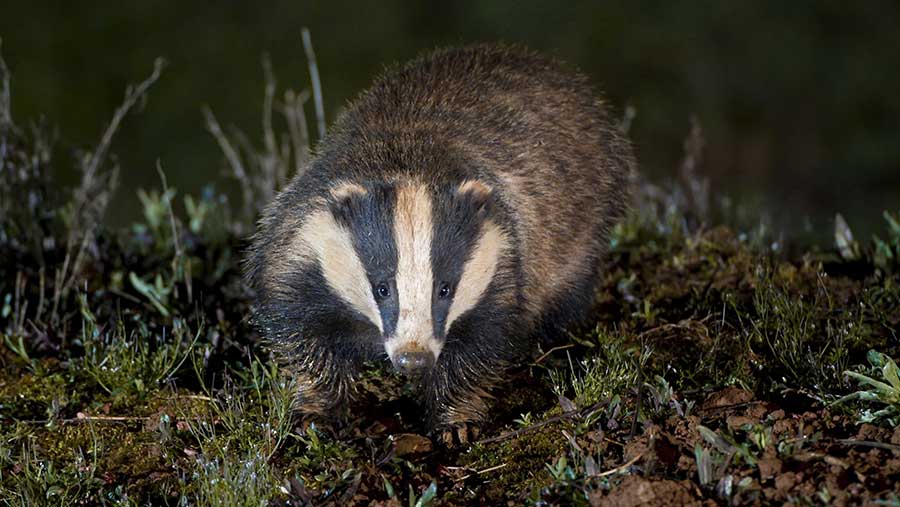Defra to extend badger cull to low-risk area
 © Richard Costin/FLPA/imageBROKER/REX/Shutterstock
© Richard Costin/FLPA/imageBROKER/REX/Shutterstock The government has announced it will allow badger culling to take place in the low-risk area of England where TB herd breakdowns are linked to badgers.
Defra published the results of its consultation on Thursday (24 May) on proposals to cull badgers in low-risk areas (LRA) in the north and east of England, including Yorkshire, Cumbria and Northumberland, Norfolk, Suffolk, Essex and Kent.
An expansion of the cull into low-risk and “edge” areas of England could take place as early as this autumn, if applications for badger control licences are approved by Natural England.
See also: Farm minister explains purpose of bovine TB review
However, any decisions to allow badger culling in the LRA will be taken by ministers on a case-by-case basis and only in a “very small number of areas” identified as hotspots by the Animal and Plant Health Agency (APHA).
The consultation ran from 16 February to 15 April and it attracted 832 responses. Defra said just 3% of respondents identified themselves as “farmers or from farming organisations”.
Most of the farming community would support extending the badger cull into low-risk areas of England to tackle bovine TB, according to the findings of the government consultation.
They stressed the importance of tackling the disease both in wildlife and cattle.
Farmer support
Most of those who expressed support for culling said they felt it would help stop the spread of TB in low-risk counties. These included the NFU, the British Cattle Veterinary Association (BCVA), and the British Veterinary Association (BVA).
However, opponents, including the Badger Trust and the Humane Society International (HSI) UK, expressed concerns about the badger culling policy itself and the scientific evidence relied on to formulate it.
The Badger Trust and Born Free organisations said irrespective of the level of infection of badgers in the LRA, there was no evidence that badgers are a risk to cattle in the LRA, therefore culling was not justified.
The Wildlife Trusts, Zoological Society of London (ZSL), the Badger Trust and the Animal Welfare Group all supported government-led vaccination, but not culling.
Defra view ‘unchanged’
In its response, however, the government hinted that badger culling will soon be extended to low-risk areas.
“The government’s view remains that enabling badger control in the LRA where disease in badgers is linked with infected herds is a rational extension of the TB strategy to eradicate bovine TB,” said Defra.
Its objective for the LRA is to “continue to protect it from the ingress of disease through the movement of cattle and the possible resulting infection of wildlife vectors”.
TB strategy review
The government added that its position remains that “vaccination is unlikely to lead to disease eradication in the badger population within an acceptable time limit”.
On Thursday (24 May), Defra published a document on new guidance to Natural England on badger culling licences to control the risk of bovine TB. The document also details policy requirements for the low-risk area and areas considering supplementary culling following four-year culls.
A review of the government’s 25-year TB eradication strategy for England is currently being chaired by Sir Charles Godfray, a population biologist and fellow of the Royal Society.
Compensation announcement
Defra has also rubber-stamped a proposal to pay compensation at 50% of the average market price for any animal brought into a TB breakdown herd which then fails a TB test whilst that breakdown is still ongoing.
This already happens in Wales, but the UK government has confirmed it will apply in England from 1 November 2018.
In a written statement to parliament, farm minister George Eustice said: “The proposal is intended to encourage herd owners to take further steps to improve their disease controls in a sensible and proportionate manner.
“One way they can do this is to seek accreditation under a scheme based on the standards laid down by the Cattle Health Certification Standards (CHeCS) body.
“Herds which are accredited at the time of the breakdown will continue to receive 100% compensation for all compulsorily slaughtered cattle.”
